How To Bake Bacon for crispy, evenly cooked strips without the mess of frying. Baking is an easy, hands-off method that delivers perfect results every time.
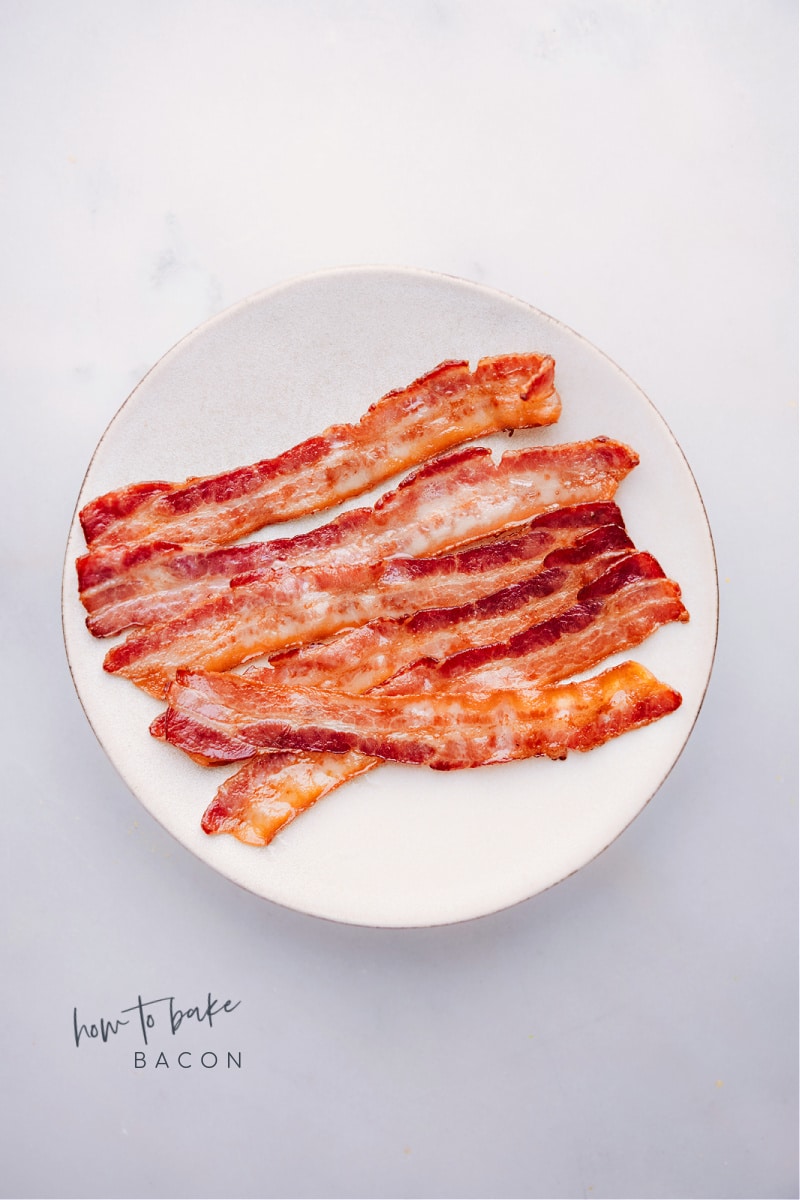
Why Bake Bacon?
Baking bacon has a few advantages over frying it on the stove.
- Baking bacon ensures even cooking and crispy results without the hassle of frying.
- It also allows excess fat to drip off for crispier, less greasy bacon. On the stove, bacon sits in its own grease, making it soggy.
- Baking is hands-off, freeing you to prep other meal parts while it cooks—no standing over a hot stove.
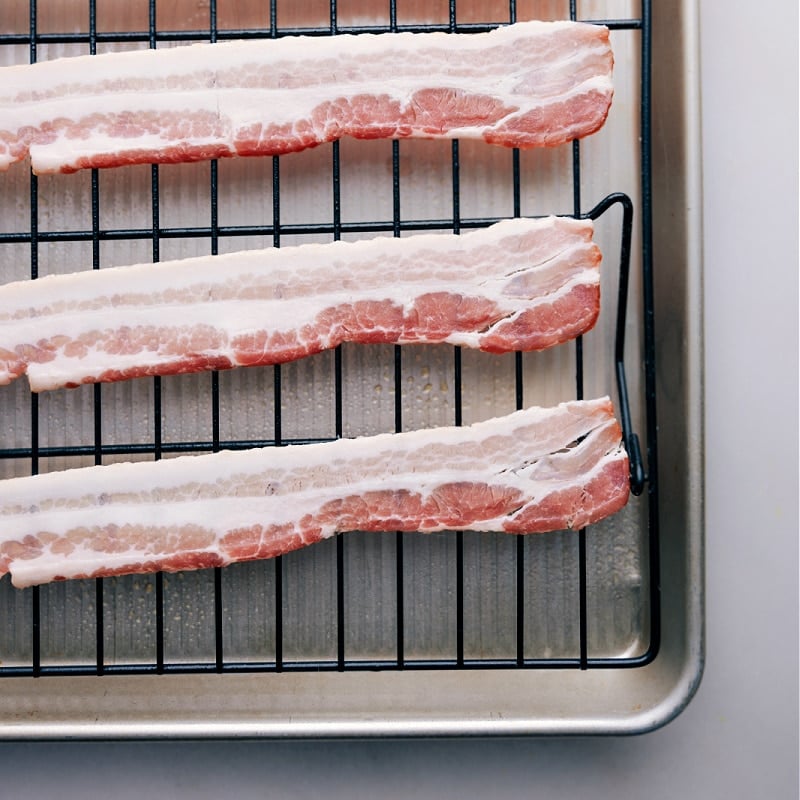
How To Bake Bacon (With Tips and Tricks)
- Preheat your oven to 400 degrees F. Make sure your oven is fully heated before you start baking your bacon.
- Use an extra-large sheet pan with raised sides. This will prevent the bacon grease from spilling over onto your oven and causing a mess.
- Use an oven-safe, heavy-duty metal cooling rack. Placing the bacon on a cooling rack will allow the excess fat to drip off, resulting in a crispier and less greasy end product.
- Grease the cooling rack lightly with cooking spray. This will prevent the bacon from sticking to the rack and ensure that it cooks evenly.
- Arrange the bacon slices in an even layer, making sure that they are not touching. This will prevent the bacon from sticking together and ensure that each slice cooks evenly.
- Bake the bacon until golden and crisp. The cooking time may vary depending on the thickness of your bacon slices, so keep an eye on them as they cook.
- Remove the bacon from the oven and place it on a paper towel-lined plate. Blot the excess grease off the bacon with another paper towel to remove any remaining grease.
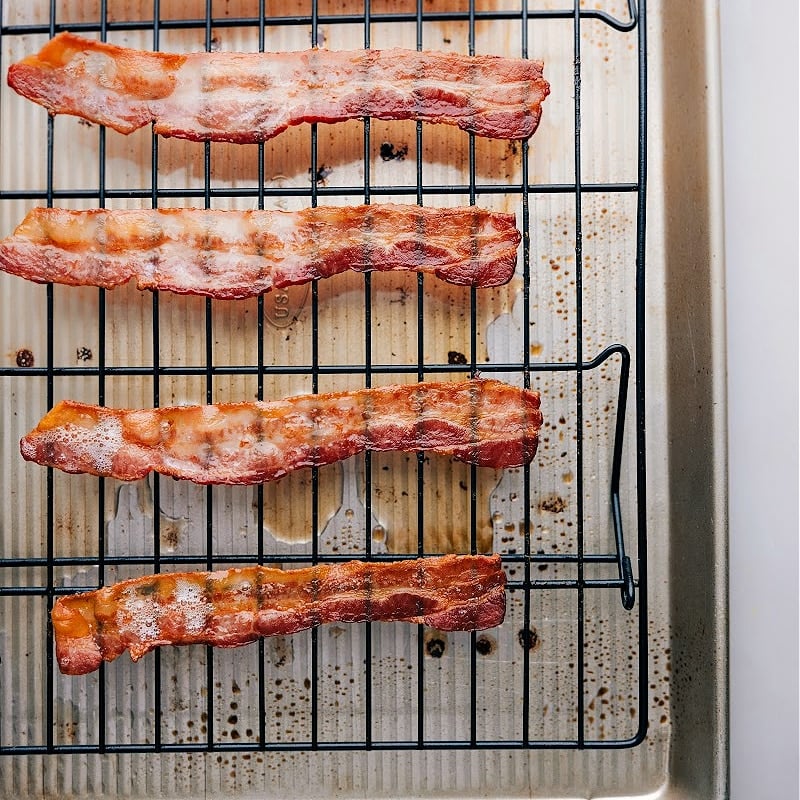
How To Use Baked Bacon
Here are some ways to use your beautifully baked bacon:
- In breakfast dishes: Baked bacon is a perfect addition to breakfast dishes like omelets, Scrambled Eggs, breakfast burritos, or breakfast sandwiches. You can also crumble it up and sprinkle it over Pancakes or Waffles for a savory twist.
- In salads: Baked bacon can add a salty, smoky flavor to any salad. Crumble it up and sprinkle it over a classic Wedge Salad or Caesar salad, or use it to top our current salad obsession–this Herbalicious Quinoa Salad
- In sandwiches or wraps: Baked bacon is a classic sandwich ingredient. Use it in a BLT or add it to a turkey or chicken sandwich or wrap for an extra burst of flavor. We love bacon in this Turkey Wrap!
- In pasta dishes: Baked bacon can be used to add depth of flavor to pasta dishes. Try adding it to our favorite Fettuccine Alfredo or Chicken Alfredo Recipe
- Over soup: We love crumbling some baked bacon on top of a good, creamy soup recipe. Try adding it to our Cauliflower Soup Recipe or Broccoli Soup.
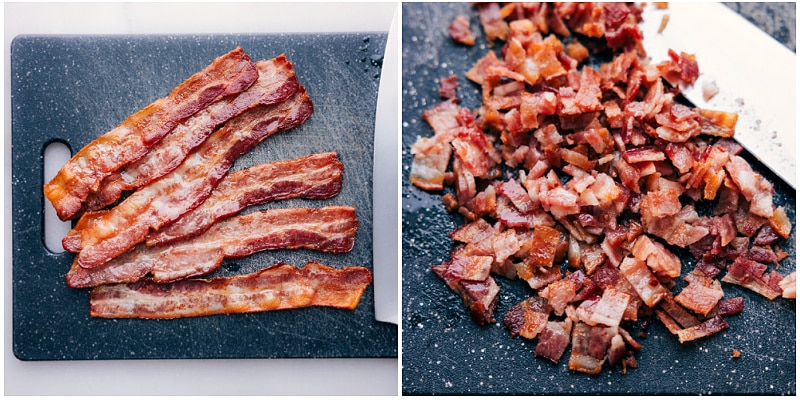
Storage
Here’s how to store baked bacon:
- Let the bacon cool: Before storing the bacon, make sure it has cooled completely.
- Store in an airtight container: Place the cooled bacon in an airtight container, such as a plastic or glass container with a tight-fitting lid. Make sure the container is large enough to hold the bacon without squishing it.
- Refrigerate or freeze: If you plan on using the bacon within a few days, store it in the refrigerator. If you want to store it for longer than a few days, you can freeze it. Place the container of bacon in the refrigerator or freezer, depending on your storage needs.
- Reheat before serving: When you’re ready to serve the bacon, reheat it in the oven or microwave. To reheat in the oven, place the bacon on a baking sheet and bake at 350°F until heated through. To reheat in the microwave, place the bacon on a microwave-safe plate and heat in 15-30 second intervals until heated through.
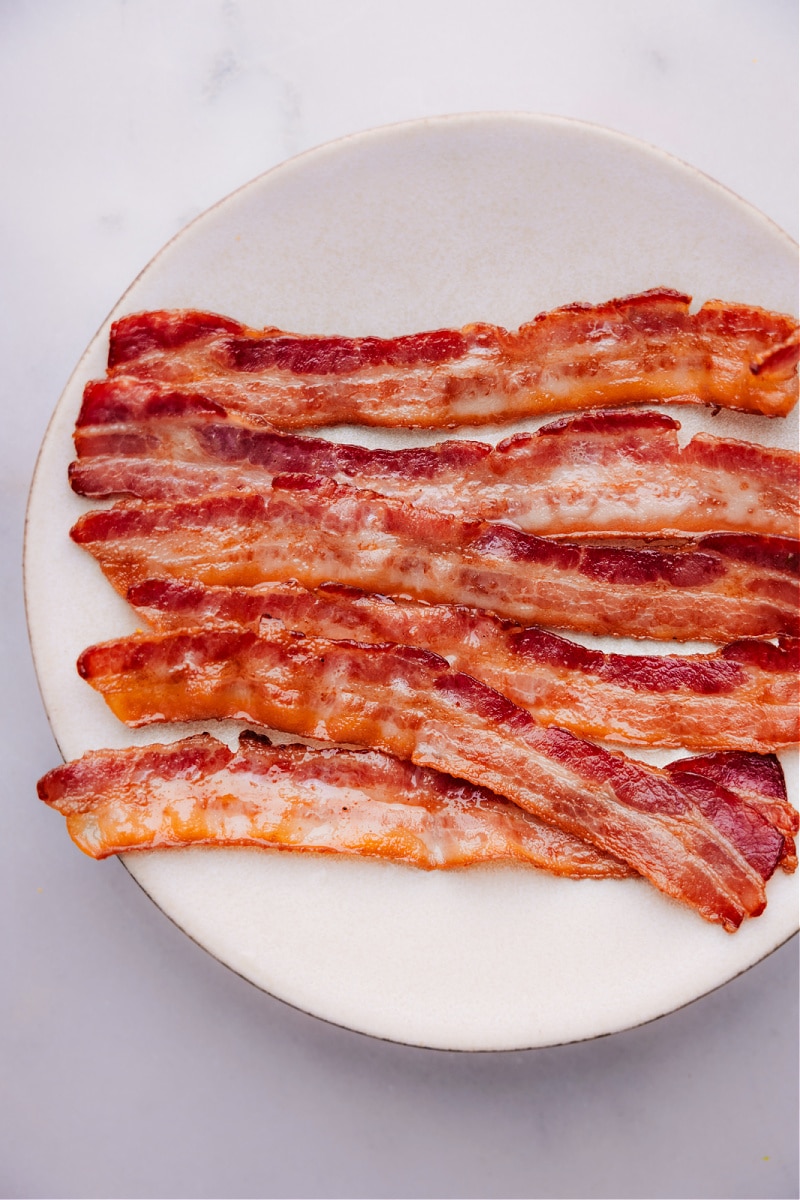
Add Bacon To One Of These Recipes:
- Arugula Salad with a white balsamic vinaigrette
- Cheesy Potatoes add bacon on top of the crunchy topping!
- Big Mac In A Bowl add bacon for extra protein!
- Biscuits and Gravy mix bacon into the sausage gravy
- Potato Leek Soup sprinkle bacon on top!
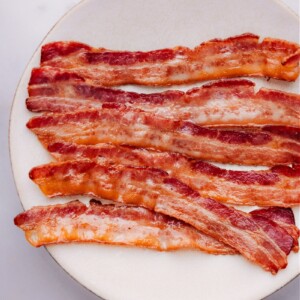
How To Bake Bacon
Equipment
- Sheet pan with raised sides
- Oven-safe, heavy-duty metal cooling rack
- Aluminum foil
Ingredients
- Cooking spray
- 8 slices bacon see note 1
Instructions
- Preheat your oven to 400°F.
- Take an extra-large sheet pan with raised sides and line well with foil. Place a metal cooling rack on top of the tray. Lightly grease the cooling rack with cooking spray.
- Place bacon slices in an even layer (not touching) on top of the cooling rack.
- Bake the bacon in the oven for 15–20 minutes or until golden and crisped to your liking. The cooking time may vary depending on the thickness of your bacon slices, so keep an eye on them as they cook.
- Remove the bacon from the oven and place it on a paper-towel-lined plate. Blot the excess grease off the bacon with another paper towel to remove any remaining grease. Enjoy whole pieces or dice to use in recipes.
- You can wad up the foil with grease and discard or carefully transfer the grease to a mason jar. Save that grease in the fridge and use in recipes—delish!
Recipe Notes
Nutrition
Nutrition information is automatically calculated, so should only be used as an approximation.


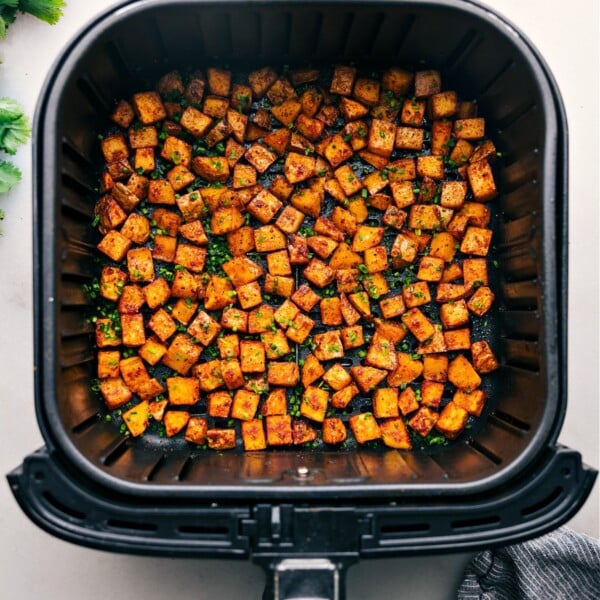
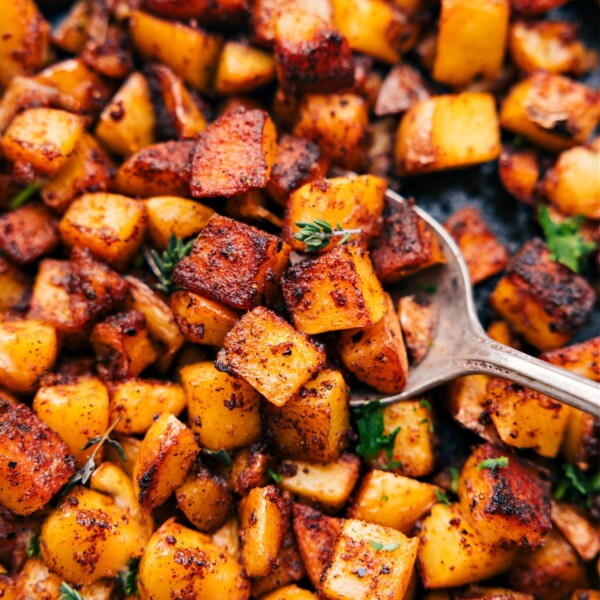
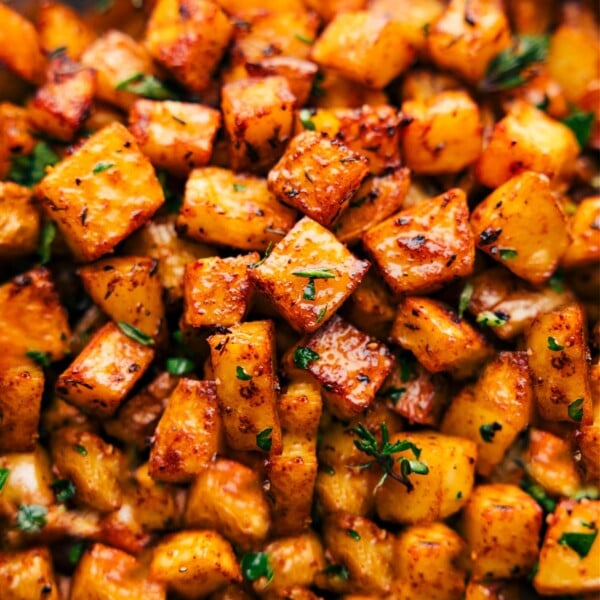
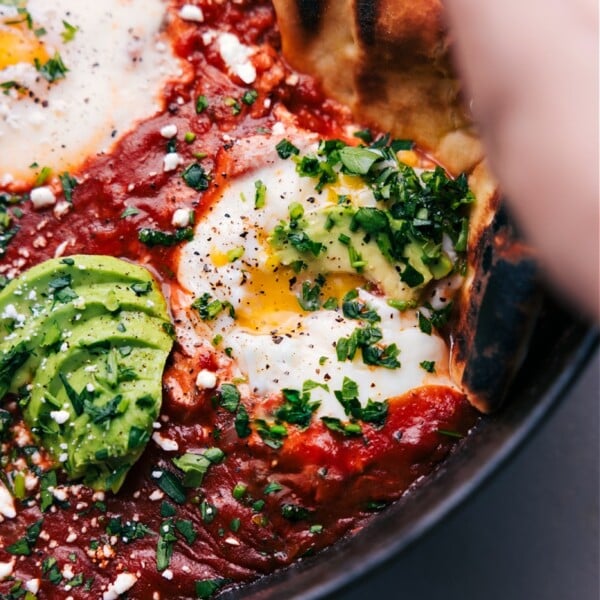









I have always wondered if it’s safe to cook bacon in a GAS oven. I mean . . . there is a FLAME in there! Will I catch my oven on fire if I try this? Also, doesn’t it make a greasy mess inside the oven? I know what my stovetop looks like after cooking bacon, so will the grease splatter in the same way in my oven?
This is a no-fail recipe – Thank you Chelsea!
So happy to hear this! Thanks so much Shirley! 🙂